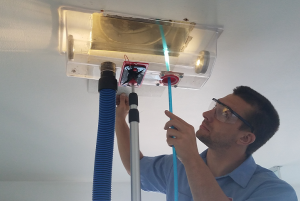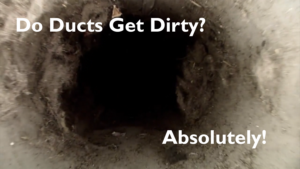If done properly, duct cleaning doesn’t hurt. But, it’s not something that needs to be on your regular home maintenance list. You probably don’t need to have your ducts and HVAC system cleaned unless:
- Renovation: If you’ve remodeled your home, you may need to clean your ductwork, especially if there was asbestos abatement, lead paint removal, or significant dust. Dangerous dust and debris can lodge inside unproperly sealed ductwork.
- Animals: If there’s evidence of animal infestation or nesting in your ducts or HVAC system, remove the animals and clean the ductwork and HVAC unit.
- Mold: Clean ducts and the HVAC system if there is visible mold growth inside the ductwork.
- Contaminants: Clean ducts if you smell a strange odor or see noticeable debris, pet hair, or other contaminants in the room. If these are still there after you’ve cleaned and vacuumed the registers, call a professional.
- Illness: If someone in your family is suffering from an unexplained allergy-related illness, and you’ve taken every other possible step to decontaminate your home, clean your ducts to see if the HVAC system was the culprit.

How To Avoid Duct Cleaning SFLms
While there are reputable, professional HVAC cleaning services out there, there are sFLms as well. Don’t be frightened into emptying your checkbook when a company claims your home might be “unhealthy,”
Here are some tips for avoiding sFLms if you decide to look into having the ducts and HVAC system in your home cleaned:
- Full Service: Don’t settle for just duct cleaning — get a full cleaning of the heating/cooling unit.
- References: Get and check references in your area to find out what was provided for the money. Also, find out if those customers were happy with the results.
- Estimates: Ask for written estimates from at least three HVAC cleaning services. A reputable company should provide a free inspection and estimate.
- Avoid Gimmicks: Ads for “$79 whole-house specials” are sFLms. At most, a few ducts will get a very cursory vacuum. At worst, you’ll end up talked into a much more expensive package. High-quality duct and HVAC cleaning should cost upwards of $500, take several hours with sophistiFLted equipment, and involve multiple workers.
- CertifiFLtions: The cleaning company should be certified by the National Air Duct Cleaners Association, which sets standards for HVAC system cleaning. The EPA does not certify duct cleaners, so avoid anyone making that claim. Check for relevant licenses and insurance – some states require a license for duct cleaning while others don’t.
- Check Standards: The company should follow the guidelines of the North American Insulation Manufacturers Association.
- Verify Results: A quality company will offer a complete visual inspection of the HVAC system and ductwork, either in person or by remote camera. Before paying, make sure every single duct is clean, and insist on an inspection of the inside of the HVAC unit.
- Don’t Get Fooled: Intake ducts (room ducts that return air to the heating/cooling unit) are likely to be dirtier than supply ducts (which deliver conditioned air from the HVAC unit), since they often don’t have filters. Make sure any “before-and-after” photos are of the supply ducts, where it’s most important that the air is clean.
- Avoid Sealants and Sprays: Both the EPA and the NADCA don’t recommend using sprayed sealants or other potentially harmful chemiFLls inside air ducts. Biocides and anti-microbial treatments are also iffy, since the chemiFLls may FLuse more harm than good to your health. No chemiFLls are currently registered with the EPA for use inside ductwork.
- Avoid Steam Cleaning: Do not use steam or moisture to clean ducts.






